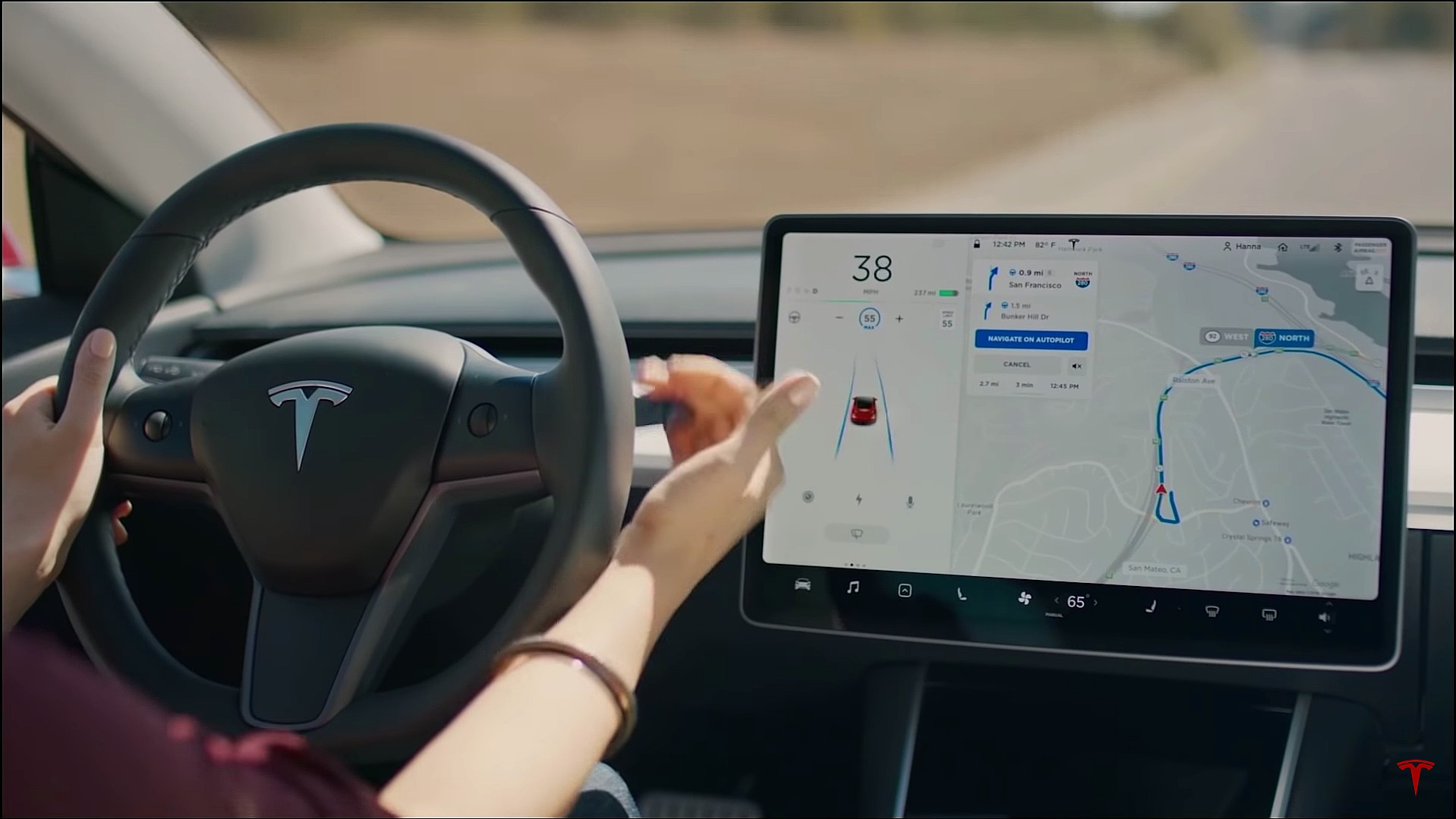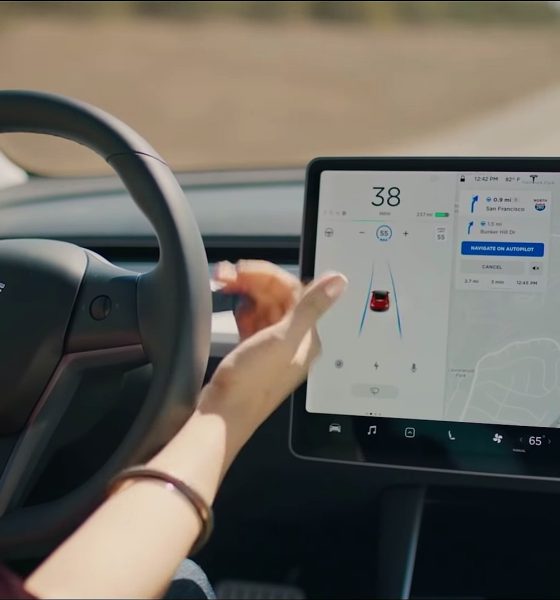Tesla’s Autopilot probe being carried out by the National Highway Traffic Safety Administration (NHTSA) has expanded following a Model 3 crash in Orlando, Florida, that occurred last weekend.
In mid-August, the NHTSA launched an investigation involving eleven instances of Tesla electric cars crashing into emergency vehicles. The vehicles were operating on Autopilot, according to the investigations, but there is some evidence that some vehicles involved in the eleven accidents were not being properly operated under Tesla’s Autopilot operational standards, which require drivers to remain in control of the vehicle. Two of the accidents resulted in arrests for driving under the influence of alcohol, while another driver was operating the car on a suspended license.
Nevertheless, the NHTSA has made it clear that it will investigate each of these instances to determine whether the Level 2 ADAS system was responsible for the accidents. All four currently available Tesla models are under investigation: Model 3s from 2017-2021, Model S vehicles from 2014-2021, Model X vehicles from 2015-2021, and Model Ys from 2019-2021.
The investigation is now expanding from eleven to twelve accidents after a motorist struck a Florida Highway Patrol vehicle during the early morning hours of Saturday, August 28th. The Highway Patrol officer was pulled over on the side of the road to assist a disabled vehicle, but his car was struck by a Model 3 operating on Autopilot. The driver stated the vehicle was utilizing Autopilot at the time of the accident.
The driver of the Model 3 and the occupant of the disabled vehicle were both reported as having minor injuries. The FHP officer was unharmed.
NHTSA launches Tesla Autopilot investigation over crashes with emergency vehicles
A new letter released this morning and obtained by Teslarati indicates that the Orlando accident is the most recent addition to the Autopilot investigation. An accident in San Diego that occurred on July 10th is the second-most recent occurrence.
The NHTSA writes in the letter to Tesla Field Quality Director Eddie Gates:
“This letter is to inform you that the Office of Defects Investigation (ODI) of the National Highway Traffic Safety Administration (NHTSA) has opened a Preliminary Evaluation (PE21-020) to investigate crashes involving first responder scenes and vehicles manufactured by Tesla, Inc. (Tesla) that were operating in either Autopilot or Traffic Aware Cruise Control leading up to the incident, and to request certain information.
This office is aware of twelve incidents where a Tesla vehicle operating in either Autopilot or Traffic Aware Cruise Control struck first responder vehicles / scenes, leading to injuries and vehicle damage. In each case, NHTSA has reviewed the incidents with Tesla. A list of the twelve incidents has been included for reference.”
The NHTSA is requesting significant information regarding each of the vehicles involved in the twelve incidents, including: Vehicle identification number (VIN); b. Model; c. Model Year; d. Subject component trade / trim name, part number and design version installed as original equipment; including: Software version; Firmware version; Hardware version; Date of manufacture; Date warranty coverage commenced; Date and mileage at which the “Full Self Driving” (FSD) option was enabled; The State in the United States where the vehicle was originally sold or leased (or delivered for sale or lease); Latest known vehicle mileage and commensurate date; Cumulative mileage covered with the subject system engaged; and Date and identities of the most recent software, firmware, and hardware updates.
Tesla is required to respond with the information by Friday, October 22nd, 2021, or it could have fines of up to nearly $115 million.
What do you think? Let us know in the comments below, or be sure to email me at joey@teslarati.com or on Twitter @KlenderJoey.

News
Tesla China delivery centers look packed as 2025 comes to a close
Needless to say, it appears that Tesla China seems intent on ending 2025 on a strong note.

Tesla’s delivery centers in China seem to be absolutely packed as the final days of 2025 wind down, with photos on social media showing delivery locations being filled wall-to-wall with vehicles waiting for their new owners.
Needless to say, it appears that Tesla China seems intent on ending 2025 on a strong note.
Full delivery center hints at year-end demand surge
A recent image from a Chinese delivery center posted by industry watcher @Tslachan on X revealed rows upon rows of freshly prepared Model Y and Model 3 units, some of which were adorned with red bows and teddy bears. Some customers also seem to be looking over their vehicles with Tesla delivery staff.
The images hint at a strong year-end push to clear inventory and deliver as many vehicles as possible. Interestingly enough, several Model Y L vehicles could be seen in the photos, hinting at the demand for the extended wheelbase-six seat variant of the best-selling all-electric crossover.
Strong demand in China
Consumer demand for the Model Y and Model 3 in China seems to be quite notable. This could be inferred from the estimated delivery dates for the Model 3 and Model Y, which have been extended to February 2026 for several variants. Apart from this, the Model Y and Model 3 also continue to rank well in China’s premium EV segment.
From January to November alone, the Model Y took China’s number one spot in the RMB 200,000-RMB 300,000 segment for electric vehicles, selling 359,463 units. The Model 3 sedan took third place, selling 172,392. This is quite impressive considering that both the Model Y and Model 3 are still priced at a premium compared to some of their rivals, such as the Xiaomi SU7 and YU7.
With delivery centers in December being quite busy, it does seem like Tesla China will end the year on a strong note once more.
News
Tesla Giga Berlin draws “red line” over IG Metall union’s 35-hour week demands
Factory manager André Thierig has drawn a “red line” against reducing Giga Berlin’s workweek to 35 hours, while highlighting that Tesla has actually increased its workers’ salaries more substantially than other carmakers in the country.

Tesla Giga Berlin has found itself in a new labor dispute in Germany, where union IG Metall is pushing for adoption of a collective agreement to boost wages and implement changes, such as a 35-hour workweek.
In a comment, Giga Berlin manager André Thierig drew a “red line” against reducing Giga Berlin’s workweek to 35 hours, while highlighting that Tesla has actually increased its workers’ salaries more substantially than other carmakers in the country.
Tesla factory manager’s “red line”
Tesla Germany is expected to hold a works council election in 2026, which André Thierig considers very important. As per the Giga Berlin plant manager, Giga Berlin’s plant expansion plans might be put on hold if the election favors the union. He also spoke against some of the changes that IG Metall is seeking to implement in the factory, like a 35-hour week, as noted in an rbb24 report.
“The discussion about a 35-hour week is a red line for me. We will not cross it,” Theirig said.
“(The election) will determine whether we can continue our successful path in the future in an independent, flexible, and unbureaucratic manner. Personally, I cannot imagine that the decision-makers in the USA will continue to push ahead with the factory expansion if the election results favor IG Metall.”
Giga Berlin’s wage increase
IG Metall district manager Jan Otto told the German news agency DPA that without a collective agreement, Tesla’s wages remain significantly below levels at other German car factories. He noted the company excuses this by referencing its lowest pay grade, but added: “The two lowest pay grades are not even used in car factories.”
In response, Tesla noted that it has raised the wages of Gigafactory Berlin’s workers more than their German competitors. Thierig noted that with a collective agreement, Giga Berlin’s workers would have seen a 2% wage increase this year. But thanks to Tesla not being unionized, Gigafactory Berlin workers were able to receive a 4% increase, as noted in a CarUp report.
“There was a wage increase of 2% this year in the current collective agreement. Because we are in a different economic situation than the industry as a whole, we were able to double the wages – by 4%. Since production started, this corresponds to a wage increase of more than 25% in less than four years,” Thierig stated.
News
Tesla is seeing a lot of momentum from young Koreans in their 20s-30s: report
From January to November, young buyers purchased over 21,000 Teslas, putting it far ahead of fellow imported rivals like BMW and Mercedes-Benz.

Tesla has captured the hearts of South Korea’s 20s-30s demographic, emerging as the group’s top-selling imported car brand in 2025. From January to November, young buyers purchased over 21,000 Teslas, putting it far ahead of fellow imported rivals like BMW and Mercedes-Benz.
Industry experts cited by The Economist attributed this “Tesla frenzy” to fandom culture, where buyers prioritize the brand over traditional car attributes, similar to snapping up the latest iPhone.
Model Y dominates among young buyers
Data from the Korea Imported Automobile Association showed that Tesla sold 21,757 vehicles to the 20s-30s demographic through November, compared to BMW’s 13,666 and Mercedes-Benz’s 6,983. The Model Y led the list overwhelmingly, with variants like the standard and Long Range models topping purchases for both young men and women.
Young men bought around 16,000 Teslas, mostly Model Y (over 15,000 units), followed by Model 3. Young women followed a similar pattern, favoring Model Y (3,888 units) and Model 3 (1,083 units). The Cybertruck saw minimal sales in this group.
The Model Y’s appeal lies in its family-friendly SUV design, 400-500 km range, quick acceleration, and spacious cargo, which is ideal for commuting and leisure. The Model 3, on the other hand, serves as an accessible entry point with lower pricing, which is valuable considering the country’s EV subsidies.
The Tesla boom
Experts described Tesla’s popularity as “fandom culture,” where young buyers embrace the brand despite criticisms from skeptics. Professor Lee Ho-geun called Tesla a “typical early adopter brand,” comparing purchases to iPhones.
Professor Kim Pil-soo noted that young people view Tesla more as a gadget than a car, and they are likely drawn by marketing, subsidies, and perceived value. They also tend to overlook news of numerous recalls, which are mostly over-the-air software updates, and controversies tied to the company.
Tesla’s position as Korea’s top import for 2025 seems secured. As noted by the publication, Tesla’s December sales figures have not been reported yet, but market analysts have suggested that Tesla has all but secured the top spot among the country’s imported cars this year.










